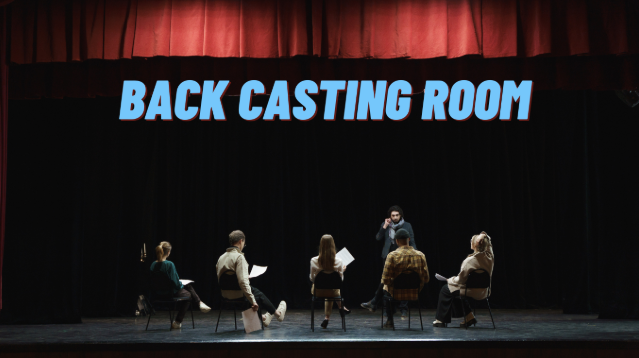Introduction
Strategic planning is essential for organizations aiming to achieve long-term success. One effective method in this domain is backcasting—a technique that begins with envisioning a desired future and works backwards to determine the necessary steps to reach that future. A back casting room serves as a dedicated space where this process is facilitated, allowing teams to collaboratively develop actionable plans. This article delves into the concept of a back casting room, its importance, key functions, and how it contributes to effective strategic planning.
What Is a Back Casting Room?
A back casting room is a specialized area designed to facilitate the backcasting process. It provides a structured environment where teams can collectively envision future goals and work backwards to identify the steps required to achieve them. This approach contrasts with traditional forecasting, which relies on predicting future trends based on current data. Backcasting encourages proactive planning by focusing on desired outcomes and the pathways to attain them.
Importance of a Back Casting Room
The back casting room plays a pivotal role in strategic planning by:
-
Fostering Collaboration: It brings together diverse stakeholders to contribute their perspectives, ensuring that the plan is comprehensive and considers various viewpoints.
-
Enhancing Creativity: By focusing on a desired future, teams are encouraged to think innovatively about the steps needed to achieve that vision.
-
Aligning Actions with Goals: It ensures that current actions are directly aligned with long-term objectives, promoting coherence in strategy execution.
Key Functions of a Back Casting Room
-
Facilitating Vision Development: Teams collaboratively define a clear and compelling vision of the desired future state.
-
Scenario Building: They create alternative scenarios or pathways to explore different potential futures and identify the most viable options.
-
Identifying Pathways: The team determines specific strategies and actions required to move from the current state to the desired future state.
-
Monitoring Progress: Establish mechanisms to track progress, identify deviations from the plan, and make necessary adjustments.
Implementing a Casting Room
To effectively implement a back casting room, consider the following steps:
-
Set Clear Objectives: Define the purpose of the backcasting session and the specific goals to be achieved.
-
Prepare the Space: Ensure the room is equipped with necessary tools such as whiteboards, markers, and digital devices to facilitate brainstorming and planning.
-
Engage Stakeholders: Involve individuals from various departments to provide diverse insights and foster a holistic approach.
-
Facilitate the Process: Guide the team through the backcasting steps, encouraging open communication and creative thinking.
-
Document Outcomes: Record the identified pathways and action plans for future reference and implementation.
Benefits of Using a Back Casting Room
Utilizing a back casting room offers several advantages:
-
Clarity in Planning: It provides a clear roadmap from the present to the desired future, reducing ambiguity in strategic planning.
-
Proactive Problem Solving: By envisioning potential challenges in advance, teams can develop strategies to mitigate risks.
-
Enhanced Decision-Making: It supports informed decision-making by aligning current actions with long-term objectives.
Challenges in Back Casting
While beneficial, back casting also presents challenges:
-
Resource Intensive: Setting up and maintaining a back casting room can require significant investment in both physical space and collaboration tools.
-
Requires Buy-In: Successful back casting necessitates buy-in from all stakeholders, which can be challenging to achieve.
-
Complex Process: The back casting process can be complex and time-consuming, requiring careful planning and facilitation.
Conclusion
A back casting room is a valuable tool in strategic planning, enabling organizations to proactively define their desired future and develop actionable plans to achieve it. By fostering collaboration, enhancing creativity, and aligning actions with long-term goals, it contributes significantly to organizational success. Despite its challenges, the benefits of using a back casting room make it an essential component of effective strategic planning.
FAQs
-
What is the difference between backcasting and forecasting?
- Backcasting starts with defining a desirable future and works backwards to identify the steps needed to achieve it. Forecasting involves predicting future events based on current trends.
-
Can backcasting be applied to personal goal setting?
- Yes, individuals can apply backcasting principles to set and achieve personal goals by envisioning their desired future and planning backwards to determine the necessary steps.
-
What are some common tools used in a back casting room?
- Common tools include whiteboards, markers, digital devices, and collaborative software platforms that facilitate brainstorming and planning.
-
How can a back casting room enhance team collaboration?
- By providing a structured environment for open communication and collective problem-solving, a back casting room fosters teamwork and diverse input.
-
What are the key elements of a successful back casting process?
- A clear future vision, thorough scenario building, and effective implementation strategies are essential for successful back casting.







